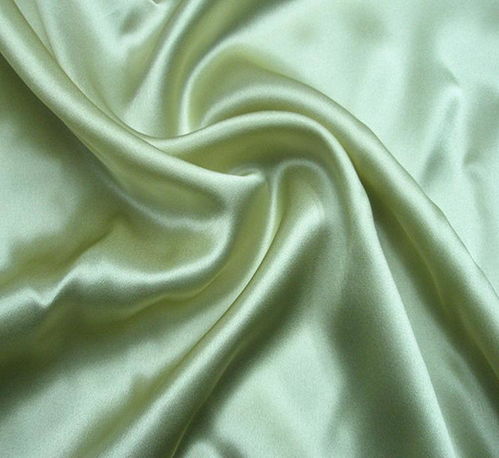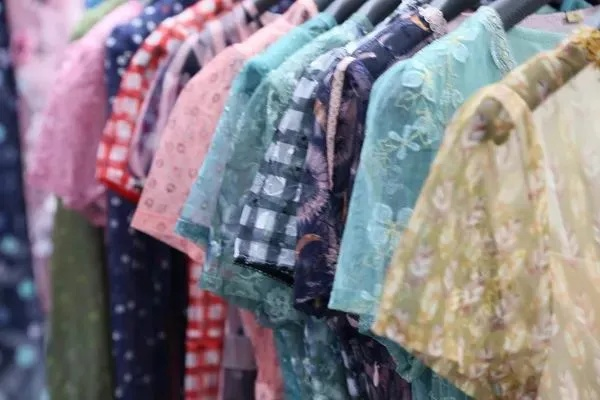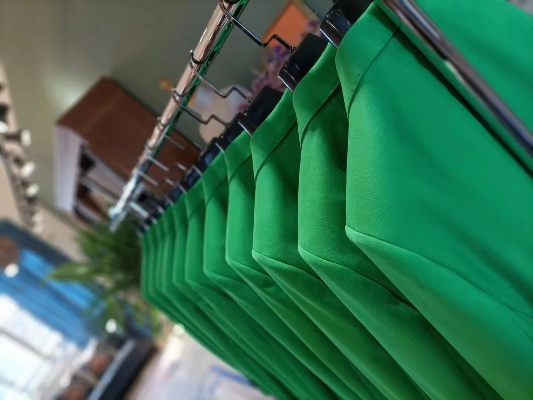A Comparative Analysis of Textile and Clothing Designers
This study aims to compare the design styles and techniques of textile and clothing designers. The research methodology involves a comprehensive review of literature, interviews with industry professionals, and analysis of design samples. The findings suggest that textile designers focus on functionality and sustainability, while clothing designers emphasize aesthetics and personal expression. Both fields use innovative materials and techniques to create unique designs, but there are distinct differences in their approach to color, pattern, and texture. Overall, the comparison highlights the importance of collaboration between textile and clothing designers in creating successful products that meet the needs and desires of consumers.
Introduction: In the world of fashion, textile and clothing designers play a pivotal role in creating pieces that not only meet the functional needs but also captivate the senses. The question at hand is whether textile or clothing design is more rewarding and fulfilling. This discussion will delve into the unique aspects of each profession, their challenges, and potential future opportunities.
Textile Designer: Textile designers work with fabrics, threads, and patterns to create garments that are both visually appealing and functional. They have a significant impact on the lives of people through the creation of clothing that enhances comfort, style, and sustainability.
Pros:

- High demand for innovative designs that address social issues such as eco-friendly materials and ethical production practices.
- Opportunities for collaboration with other designers, manufacturers, and suppliers.
- Potential for entrepreneurship by starting their own brand.
- Flexibility in terms of working hours and location.
Cons:
- High competition and the need to constantly update their skills to stay ahead of trends.
- Long hours and deadlines, especially during peak seasons.
- Limited creative freedom compared to clothing designers.
Clothing Designer: Clothing designers focus on the aesthetics and functionality of garments, aiming to make clothes that are both stylish and comfortable. They often work closely with fashion houses and runway shows, where their designs are showcased to the public.
Pros:
- Direct interaction with consumers, allowing them to understand the market's preferences better.
- Opportunity to experiment with new materials and techniques.
- Potential for high salaries and recognition within the industry.
- Access to advanced technology and tools for designing and producing garments.
Cons:
- Limitations in creative freedom compared to textile designers.
- High levels of stress due to tight deadlines and high expectations from clients.
- Difficulty in establishing oneself as a professional in the fast-paced fashion industry.
Table: Key Differences between Textile and Clothing Designers | Category | Textile Designer | Clothing Designer | |---------|-----------------|-------------------| | Skills | Use of pattern-making, stitching, and cutting techniques | Use of sewing, tailoring, and draping techniques | | Focus | On creating functional, durable items | On creating aesthetically pleasing, trendy pieces | | Market | High demand for sustainable, eco-friendly options | High demand for luxury, high-fashion items | | Collaboration | Collaboration with other designers and manufacturers | Collaboration with fashion houses and models | | Creativity | Moderate creativity due to technical constraints | High creativity due to the ability to manipulate fabrics | | Technical Skills | Basic knowledge of textiles and sewing techniques | Advanced knowledge of fashion design principles and sewing techniques |
Case Study: Consider the case of Sarah, a textile designer who has been working in the industry for over a decade. She specializes in creating sustainable clothing using organic cotton and recycled materials. Her designs have won several awards and have been featured in high-end fashion shows around the world. Sarah's success can be attributed to her dedication to innovation, her ability to work with different stakeholders, and her commitment to environmental responsibility.
On the other hand, consider Emily, a clothing designer who has been in the industry for just two years. She creates trendy, high-fashion pieces using cutting-edge materials and techniques. Her designs have been featured in major fashion magazines and have received critical acclaim from the fashion industry. Emily's success can be attributed to her ability to stay up-to-date with the latest fashion trends, her strong communication skills, and her passion for creating beautiful clothes.
Conclusion: Both textile and clothing designers have their strengths and weaknesses, and the choice between them ultimately depends on an individual's interests, goals, and values. While textile designers may enjoy the challenge of creating functional, durable items, clothing designers may find greater satisfaction in creating aesthetically pleasing, trendy pieces. Both professions offer unique opportunities for growth and innovation, making them valuable contributions to the fashion industry.
在当今社会,随着人们对生活品质的追求不断提高,纺织品和服装设计师这一职业备受瞩目,他们不仅需要具备专业的设计技能,还需要对市场趋势、流行元素和消费者需求有深入的了解,本文将探讨纺织品和服装设计师的职业特点、发展趋势以及相关优势,帮助读者更好地了解这一职业。
纺织品设计师的职业特点

纺织品设计师主要负责设计、开发和推广各种类型的纺织品,包括面料、辅料、饰品等,他们需要具备丰富的纺织材料知识,了解不同面料的特点和性能,能够根据市场需求和消费者喜好进行创新设计,他们还需要具备良好的审美能力和创意设计能力,能够创造出符合现代审美观念的纺织品。
在职业发展过程中,纺织品设计师需要具备以下几个方面的能力:
- 专业知识:掌握纺织材料的性质、生产工艺和设计技巧。
- 创新思维:能够不断探索新的纺织材料和设计理念,推动行业发展和创新。
- 敏锐的市场洞察力:能够准确把握市场趋势和消费者需求,为产品设计提供有力支持。
服装设计师的职业特点
服装设计师主要负责设计、开发和推广各种类型的服装,包括时装、配饰服装等,他们需要具备丰富的服装设计知识和技能,能够根据不同场合和目标客户的需求进行创新设计,他们还需要具备良好的审美能力和创意设计能力,能够创造出符合时尚潮流和消费者喜好的服装。
在职业发展过程中,服装设计师需要具备以下几个方面的能力:
- 专业知识:了解不同款式、颜色、材质等服装的特点和适用场合。
- 创新能力:能够不断探索新的服装设计和制作工艺,提高产品的质量和竞争力。
- 敏锐的市场洞察力:能够准确把握市场趋势和消费者需求,为产品设计提供有力支持,他们还需要具备良好的沟通能力和团队协作能力,能够与生产厂家和其他部门合作,确保产品的顺利生产和上市。
纺织品和服装设计师的优势分析
纺织品和服装设计师这一职业具有以下优势:
- 高薪水待遇:随着人们对生活品质的追求不断提高,纺织品和服装设计师的薪资水平也在不断提高,他们可以获得较高的收入,为个人职业发展提供有力支持。
- 多元化发展:纺织品和服装设计师可以从事多个领域的设计工作,包括纺织品设计、服装设计、面料研发等,他们可以根据自己的兴趣和特长选择适合自己的领域进行发展。
- 市场需求大:随着全球化和互联网的发展,纺织品和服装行业得到了快速发展,市场需求不断增长,为纺织品和服装设计师提供了更多的发展机会。
- 创新能力强:纺织品和服装设计师需要具备丰富的知识和技能,能够不断探索新的纺织材料和设计理念,推动行业发展和创新,他们还需要具备良好的创新思维和实践能力,能够创造出符合现代审美观念的纺织品和服装。
案例说明
以某知名纺织品品牌为例,该品牌一直致力于创新设计和品质提升,其纺织品设计师团队在市场上取得了良好的口碑,他们不仅掌握了先进的纺织材料知识和生产工艺,还具备丰富的设计经验和创新思维,在产品设计中,他们注重时尚感和舒适度,不断探索新的面料和工艺,为消费者提供高品质的纺织品,他们还与生产厂家和其他部门紧密合作,确保产品的顺利生产和上市,该品牌在市场上获得了较高的知名度和美誉度,成为行业内的佼佼者之一。
纺织品和服装设计师是一个充满挑战和机遇的职业领域,他们需要具备专业的设计技能、创新思维和实践能力,能够创造出符合现代审美观念的纺织品和服装,他们还需要具备敏锐的市场洞察力和团队协作能力,能够与生产厂家和其他部门合作,推动行业的发展和创新,在未来发展中,纺织品和服装设计师将继续发挥重要作用,为人们的生活品质提供更多更好的产品和服务。
Articles related to the knowledge points of this article:
The Rise of Textile Specialty Oils
Exploring the Art of Home with JiaMeiYiJu Textiles
The Navigating Challenges of Applying for Jobs at Hangzhou Jiexi Ju Textiles



